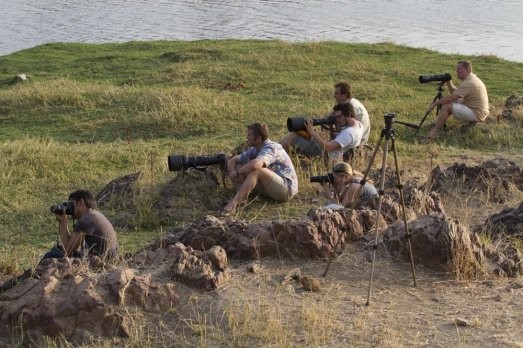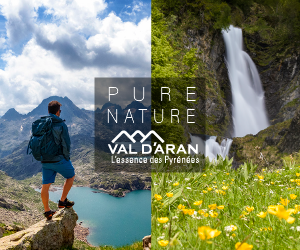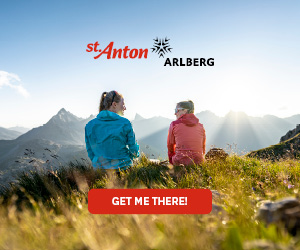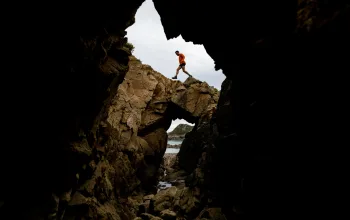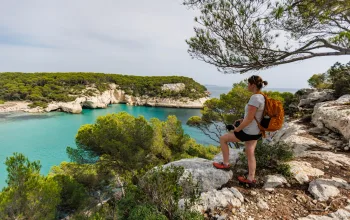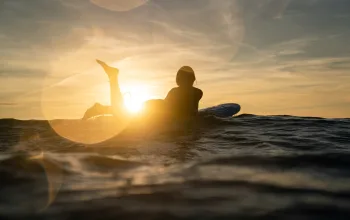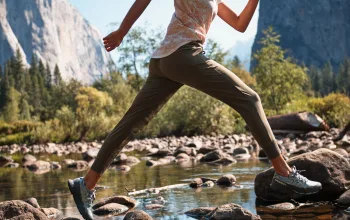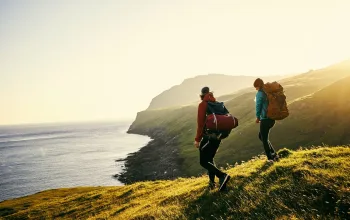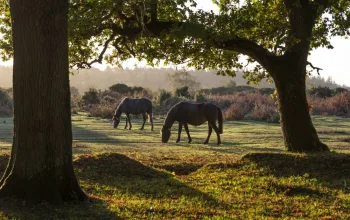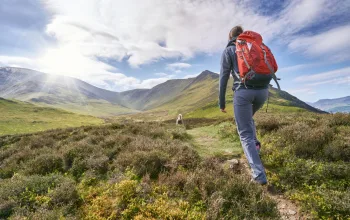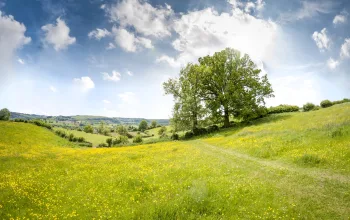In the dusty depths of Ruaha National Park in Southern Tanzania, I was perched in the back of a safari truck overlooking a dry river bed, squinting into my camera, while renowned East African photographer Paul Joynson-Hicks whispered sweet nothings about apertures and shutter speeds into my ear. The reason for his lowered voice was just a long lens away: a pride of lions caught in a moment of heart-stopping excitement. Suddenly, they roared to each other! It’s a sound wall that penetrates your chest cavity and pinballs there for a few moments after the actual roar has stopped. It’s unearthly, and completely captivating.
On our side of the river bed were three young cubs, a large male and two lionesses; making their way towards us from the other side were six more cubs and three more adults. We were in prime position to watch the greetings and play unfold.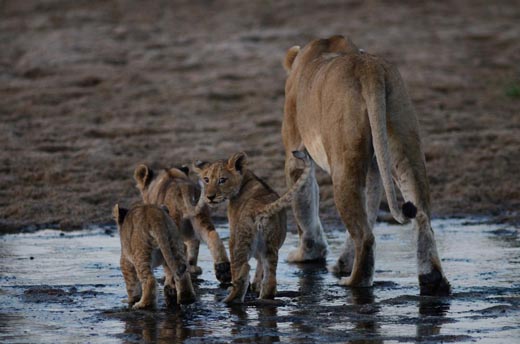
‘Check your settings, this sunlight’s bright,’ murmured Paul. ‘You need to avoid over-exposure and also that patch of shadow there which will cause your camera difficulties in assessing the light.’ I quickly settled my lens onto a bean bag. Around me cameras clicked, a soundtrack to the excitement.
And that’s just one moment. Thanks to our guide Sven Liebchen’s uncanny ability to predict wildlife behaviour, we found a whole series of these magical, private viewings of totally natural wildlife antics.
I’ve been taking photos for almost 15 years, yet I’ve never made the most of my camera. The auto setting or, at best, aperture priority seemed to work, and for years I left it at that.
An African safari in a remote part of Tanzania offered the ideal opportunity to change that. It’s one of those holidays that probably figures on most people’s list of must-do experiences. But to make that trip of a lifetime actually last a lifetime, you need great photo memories. That’s where a Digital Photography Workshop Safari comes in. Learning how to get the most out of your camera while on safari is a compelling combination.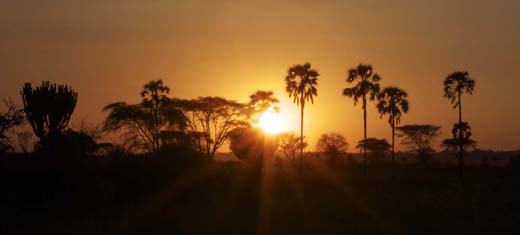
My research had led me to the company Authentic Tanzania. I knew that I did not want too many other tourists, which would result in lots of cars spoiling the backgrounds of my shots – so I deliberately avoided the very well-known parks (such as Serengeti & Ngorongoro). Ruaha in the south of Tanzania is now the country’s largest National Park, yet remains one of its best kept secrets – partly because it’s a bit of drive to get to, although roads are good and the views en route are spectacular (flying in is also an option).
I also knew that I was keen to see some of the larger game – so that meant visiting in the dry season (for birds I’d recommend the wet season). And, finally, I already knew I liked the photography style of Paul Joynson-Hicks. Authentic Tanzania partners with Paul for its workshops and specialises in the more remote southern parks, which feature some dramatic landscapes that would provide ideal settings.
Authentic Tanzania also provides an animal behaviour expert as the safari guide on the workshop – thus ensuring excellent subject material and allowing us to learn a little about the wildlife and so help us get great shots, rather than average ones. As Sven Liebchen explained: ‘The more you learn about the animals, the more likely it is that you will capture them doing interesting things. It also makes people more patient observers if they understand what they are seeing. The environment and wildlife are fascinating, it’s not enough just to see a bird or an impala, a good photographer must grasp what they are recording and anticipate the action.’
The whole trip works on a flexible timetable of workshops, shoots and reviews, and allows time for challenges (both team and individual ones, to encourage participants to focus on specific skills), downloading, editing and plenty of discussion. Each session is themed around a specific area of expertise or technique, such as landscapes, animal portraits, animal behaviour, macro, capturing light, and even night shooting.
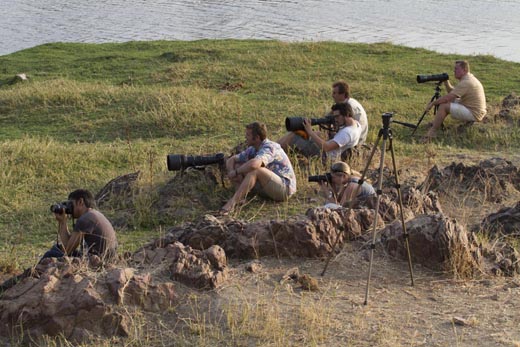
On day one our group met in Dar es Salaam and we were guided through the camera basics, to get everyone onto the same page before heading into the bush. What was intriguing was that everyone had a question, even the professional photographer who had joined the course to learn from Paul.
After that the lessons came from a combination of taking notes during the tutorials and asking questions as situations arose. For the most part, I managed to master ‘Manual’ and make my own decisions rather than expecting the camera to do all the work. Taking photos on safari has its challenges: extreme light conditions, fast-moving subjects and the need to anticipate wild animals’ behaviour, to name but a few. As a result I got a lot of shots that were later deleted, but I also got some really interesting ones that captured moments far better than anything I’d taken before.
I’ll admit I was nervous. I didn’t have the latest equipment as some did, and, while I love photography, I’m no professional. Plus, I was going to have to show other people my work! But the way the course is put together is so supportive and positive that I had little to fear. Everyone is encouraged to try out new techniques and not to worry if it doesn’t work every time.
In Africa, camping in a non-permanent camp is called ‘fly camping’ (nothing to do with insects!), but this was definitely ‘fly-glamping’. The camps are fully mobile and leave no trace behind, but include beds, hot showers, en-suite toilets and plenty of solar power for charging equipment and laptops. Most days we rose early to catch the morning light and took a bush breakfast somewhere beautiful, returning to camp to download and review over a delicious hot lunch. We’d then do another workshop and head out again in the afternoon, searching for the ideal spot for when that incredible golden hour of evening light illuminated whichever scene we might be observing. Evenings involved a three-course dinner (all miraculously produced in the camp kitchen), further reviews, a glass of wine (or two), and fireside discussions surrounded by the night sounds of the bush. Bliss.
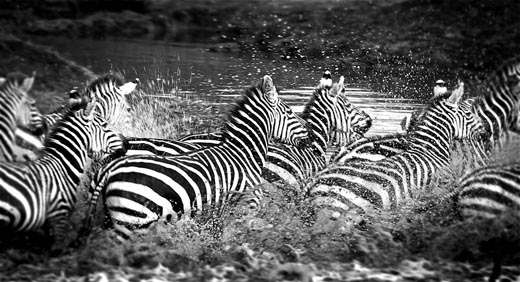
Essential kit
Of course there is an endless list of items you could bring, but in order to take part as fully as possible and really get the best from your experience there are a few pieces you’ll really need.
· A good quality DSLR camera body with a standard landscape lens
· a large range zoom lens (I’d suggest minimum 200mm, but ideally more) so you can really take advantage of all the game sightings, even those that aren’t very close
· A soft carry bag and dust cleaning kit – It really is dusty and just a few specks inside your camera can do a lot of damage
· spare batteries – I learnt this from experience! Running out of battery power, or losing one, can mean the end of your day’s shoot.
· your chargers!
· your computer or digital storage device.
Where is this? Ruaha National Park, Southern Tanzania, East Africa
How to get there/nearest airport: Fly into Dar es Salaam and then either take a full day’s drive or fly directly into Ruaha National Park. Authentic Tanzania Safaris also operate safaris in several other Southern Tanzanian parks and can arrange multiple-park safari packages on a bespoke basis.
Tour operator: Authentic Tanzania Safaris
www.authentictanzania.com
Email:
Note: workshops run throughout the year. For specific dates please contact as above. Bespoke private packages are also available.
The photographer: Paul Joynson-Hicks, Blue Mango Photography (www.pauljoynson-hicks.com)
Email:
Where you stay: Authentic Tanzania Safaris can arrange accommodation in Dar es Salaam before and after the trip, a lodge stop en route at Mikumi National Park, additional time in a Ruaha Lodge after the Workshop has been completed, or even another safari in a different park where guests can practice all they’ve learned. Whilst in Ruaha guests stay in the private fly-camp described.
How much it costs: £1,900 per person for a seven-day photographic safari to Mikumi and Ruaha National Parks, including full board lodge accommodation and private wilderness camping, expert guiding & tuition, transfers by road and park fees.
Must do: Get up early and watch the sunrise!
Top tip: Ask as many questions as you can think of in order to really understand your surroundings and get the most from your camera.


